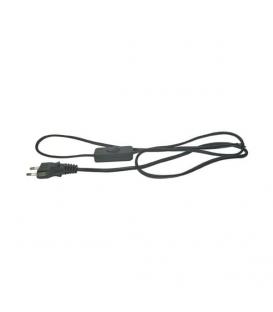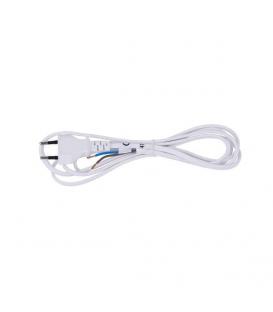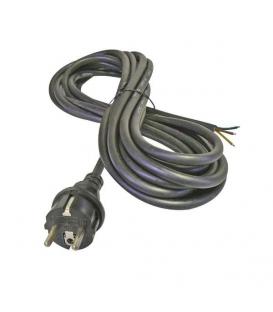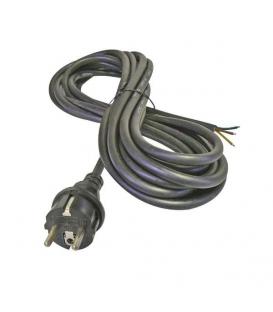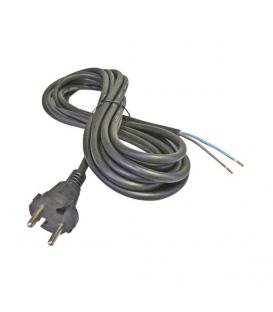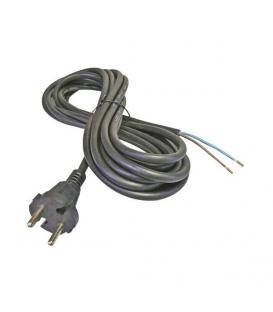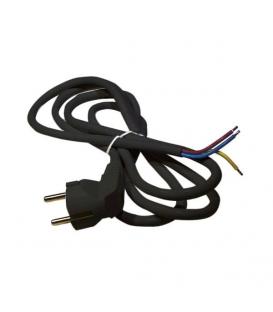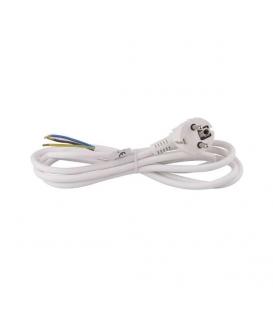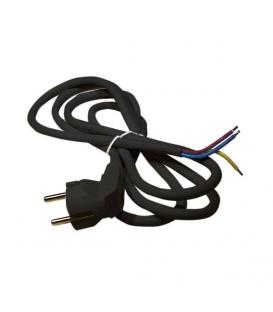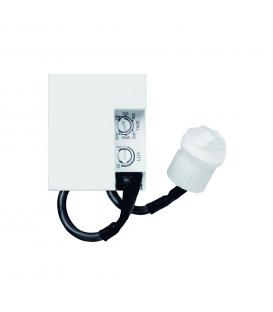Power cords quality

An electrical power cord is a cable used to transmit electric power from a power source (such as an outlet or generator) to an electrical device or equipment. Power cords consist of insulated conductors made from materials like copper or aluminum, encased in a protective and often flexible sheath. They are designed to safely conduct electricity while minimizing the risk of electrical shock and damage to the wires.
Electrical power cords are available with or without switches, in different colours and with different cable lengths.
Explanation: Electrical power cords serve as the conduit for electric current between a power source and an appliance or device. They typically have a male plug at one end, which connects to the power source, and a female connector at the other end, which plugs into the device or equipment. The conductors within the cord carry the electrical current, and the insulation and outer sheath provide protection to prevent contact with live wires.
Benefits:
- Convenience: Power cords enable devices to be connected to power sources at a distance from electrical outlets, offering flexibility in device placement and use.
- Versatility: Power cords come in various lengths, types, and configurations, making them adaptable to a wide range of devices and applications.
- Safety: Properly designed and manufactured power cords have insulation and protective sheathing that reduce the risk of electrical shock, short circuits, and fires.
- Ease of Use: Power cords are simple to connect and disconnect, allowing users to quickly set up and use devices.
- Mobility: Power cords allow for the use of devices in different locations without the need for permanent electrical installations.
- Maintenance: Power cords can be replaced relatively easily if damaged, prolonging the lifespan of devices.
Areas of Applications: Electrical power cords have diverse applications across various domains:
- Home Appliances: Power cords are used with appliances such as refrigerators, washing machines, microwaves, and vacuum cleaners.
- Electronics: Devices like TVs, computers, laptops, printers, and audio systems require power cords.
- Kitchen Equipment: Blenders, toasters, coffee makers, and other kitchen appliances use power cords.
- Industrial Machinery: Power cords are essential for machinery in factories and manufacturing processes.
- Construction Sites: Tools and equipment used in construction and renovation projects require power cords.
- Medical Equipment: Power cords are used for medical devices, diagnostic equipment, and patient care instruments.
- Entertainment: Audio and visual equipment, projectors, and lighting systems utilize power cords.
- Outdoor Events: Power cords are used for temporary setups at festivals, concerts, and other outdoor events.
- Automotive: Electric vehicle charging cables are a type of power cord used for recharging vehicles.
- Telecommunications: Devices like routers, modems, and telephones are powered through cords.
- Emergency Services: Generators, power tools, and emergency equipment rely on power cords.
- Educational Institutions: Classroom electronics, projectors, and lab equipment use power cords.
Power cords play an integral role in modern life, enabling the safe and efficient use of electrical devices and equipment in diverse settings. It's crucial to follow safety guidelines, such as avoiding cord damage, ensuring proper grounding, and using appropriate cord types for specific applications.
Browse our "Power cords" collection
Quality Power Cords
- 3,33 € 4,76 €Enhance your electronics with the Power Cord AC YDP2 1. Reliable and efficient power cords for all your devices....
- 4,12 € 5,88 €Upgrade your setup with the Power cord flat cable 2x0,75mm² in sleek Black. Enjoy reliable power delivery for all...
- 6,58 € 9,40 €Upgrade your setup with the Power Cord Flat Cable 2x0,75mm² 2m Black. Stay organized and efficient with this sleek...
- 4,12 € 5,88 €Upgrade your setup with our Power Cord Flat Cable in White - 2m of reliable power for all your devices. Say goodbye...
- 6,58 € 9,40 €Upgrade your setup with the Power cord flat cable 2x0,75mm² 2m White with Switch. Experience convenience and style in...
- 5,46 € 7,80 €Upgrade your setup with our Power Cord Flat Cable. This 3-meter black cable is perfect for all your power needs. Say...
- 7,70 € 11,00 €Upgrade your setup with the Power Cord Flat Cable 2x0,75mm². Enjoy easy access and convenience with this 3-meter...
- 5,46 € 7,80 €Upgrade your setup with the Power Cord Flat Cable in White - 3m of reliable power for all your devices. Say goodbye...
- 7,70 € 11,00 €Upgrade your setup with the Power cord flat cable in White. 3 meters of convenience and safety for all your power needs.
- 6,53 € 9,32 €Enhance your setup with the Power Cord Flexo 3x0,75mm² Braided. Experience reliable power delivery in style with this...
- 15,19 € 21,71 €Discover the durable and flexible Power Cord Flexo Cord Rubber in black. Ideal for all your power needs, this 5-meter...
- 8,69 € 12,41 €Upgrade your power setup with the Flexo cord rubber 3x1,5mm². Get reliable performance in a sleek black design. Power...
- 13,57 € 19,39 €Discover the durable and flexible Power Cord Flexo Rubber in black. Ideal for all your power needs, this 5-meter cord...
- 21,37 € 30,54 €Upgrade your power setup with the Flexo cord rubber 3x2,5mm². Get reliable performance in a sleek black design. Power...
- 7,92 € 11,32 €Upgrade your power setup with the Flexo Rubber Power Cord 2x1,5mm². Enjoy reliable performance and flexibility in...
- 5,10 € 7,29 €Upgrade your power setup with our Flexo Rubber Power Cord, 2x1mm² in sleek black. Get reliable performance and...
- 10,89 € 15,55 €Upgrade your power setup with the Power Cord Flexo Rubber 2x1mm². Get reliable performance in a sleek black design,...
- 6,91 € 9,88 €Discover the durable Power Cord Flexo Rubber 3x1mm² in sleek black. Ideal for powering your devices with precision...
- 11,41 € 16,30 €Discover the durable and flexible Power Cord Flexo Rubber in 3x1mm², perfect for all your power needs. Get this...
- 13,32 € 19,03 €Upgrade your power setup with the Power Cord Flexo Rubber 3x2,5mm². Get reliable performance in a sleek black design.
- 5,59 € 7,98 €Enhance your setup with the Power Cord Round Cable 3x1,5mm² in sleek black. Get reliable power delivery for all your...
- 4,40 € 6,29 €Enhance your setup with the Power Cord Round Cable 3x1,5mm² in White. Reliable and durable, this 2m cord ensures...
- 7,57 € 10,82 €Upgrade your setup with the Power Cord Round Cable 3x1,5mm². Enjoy reliable power delivery in sleek black design....
- 7,92 € 11,32 €Upgrade your setup with the Power Cord Round Cable 3x1,5mm² in White. Enjoy reliable power delivery over 3 meters for...
- 9,55 € 13,64 €Upgrade your setup with the Power Cord Round Cable 3x1,5mm². Enjoy reliable power delivery over 5 meters in sleek...
- 9,55 € 13,64 €Upgrade your power setup with our 5-meter white round cable, perfect for all your electrical needs. Get the Power...
- 3,67 € 5,24 €Upgrade your setup with the Power cord round cable 3x1mm² in sleek Black. Keep your devices powered up and organized...
- 4,40 € 6,29 €Upgrade your setup with the Power Cord Round Cable 3x1mm² in White. Reliable, durable, and essential for all your...



